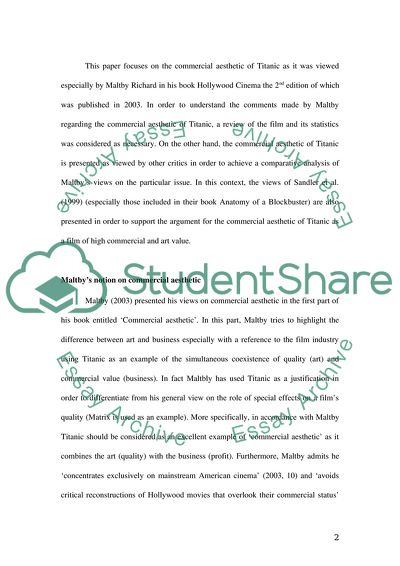Cite this document
(Commercial Aesthetic of Titanic Case Study Example | Topics and Well Written Essays - 2250 words, n.d.)
Commercial Aesthetic of Titanic Case Study Example | Topics and Well Written Essays - 2250 words. Retrieved from https://studentshare.org/visual-arts-film-studies/1706587-how-useful-is-maltbys-notion-of-a-commercial-aesthetic-in-assessing-blockbuster-films-like-titanic
Commercial Aesthetic of Titanic Case Study Example | Topics and Well Written Essays - 2250 words. Retrieved from https://studentshare.org/visual-arts-film-studies/1706587-how-useful-is-maltbys-notion-of-a-commercial-aesthetic-in-assessing-blockbuster-films-like-titanic
(Commercial Aesthetic of Titanic Case Study Example | Topics and Well Written Essays - 2250 Words)
Commercial Aesthetic of Titanic Case Study Example | Topics and Well Written Essays - 2250 Words. https://studentshare.org/visual-arts-film-studies/1706587-how-useful-is-maltbys-notion-of-a-commercial-aesthetic-in-assessing-blockbuster-films-like-titanic.
Commercial Aesthetic of Titanic Case Study Example | Topics and Well Written Essays - 2250 Words. https://studentshare.org/visual-arts-film-studies/1706587-how-useful-is-maltbys-notion-of-a-commercial-aesthetic-in-assessing-blockbuster-films-like-titanic.
“Commercial Aesthetic of Titanic Case Study Example | Topics and Well Written Essays - 2250 Words”. https://studentshare.org/visual-arts-film-studies/1706587-how-useful-is-maltbys-notion-of-a-commercial-aesthetic-in-assessing-blockbuster-films-like-titanic.


